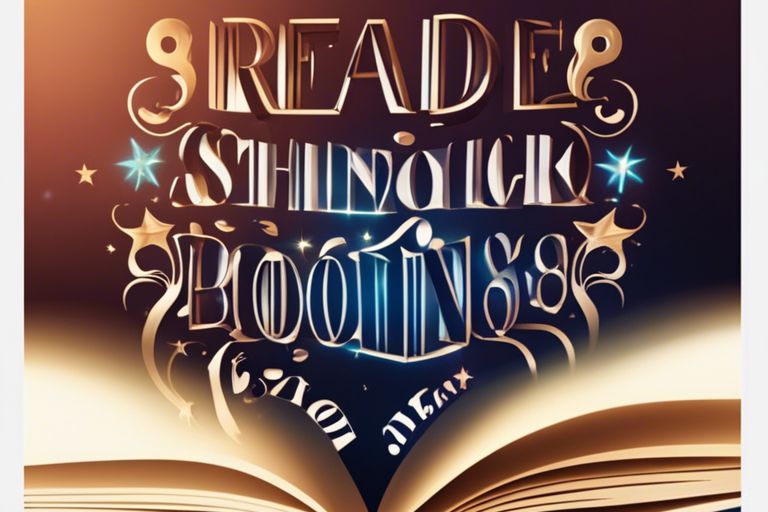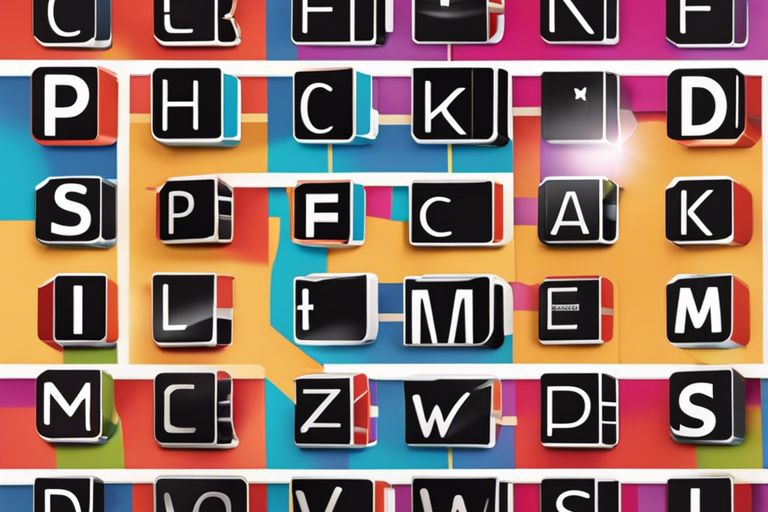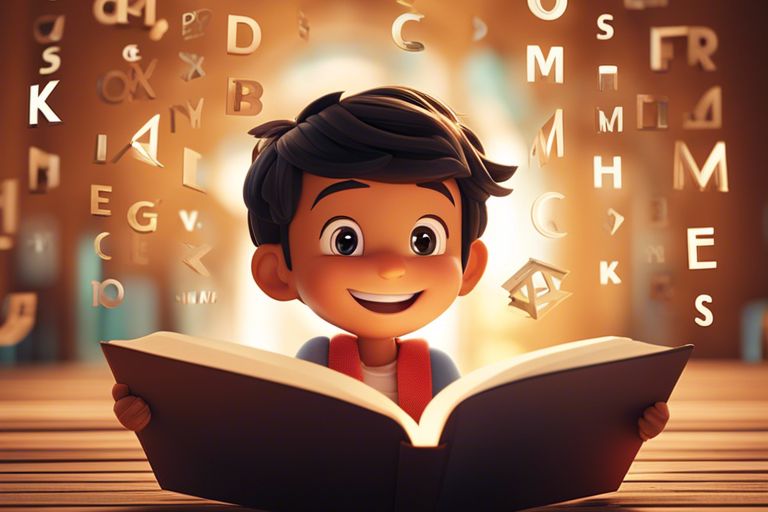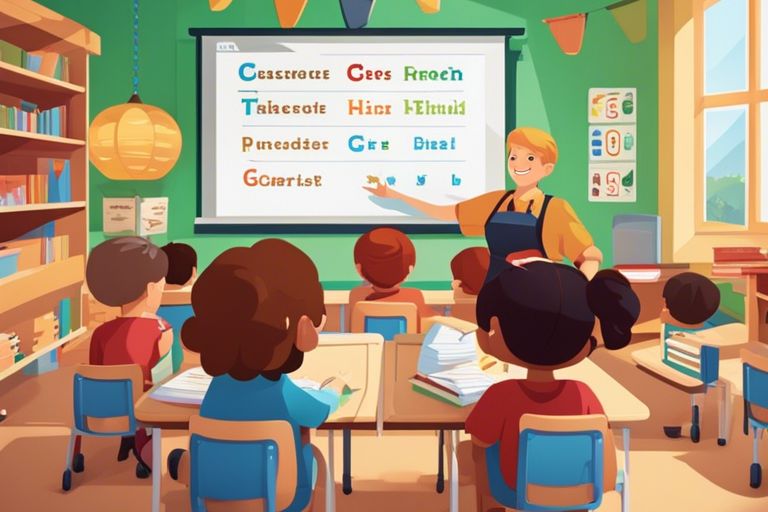
Phonics is an essential skill that helps children develop the ability to read and write. Here are the top 10 phonics rules every child should know:
- The alphabet: Children should be able to recognise and name all 26 letters of the alphabet, including their sounds.
- Consonants and vowels: Children should be able to differentiate between consonant and vowel sounds and understand that vowels are the most important sounds in words.
- Digraphs: Children should learn about digraphs, which are two letters that represent one sound, such as “sh,” “ch,” and “th.”
- Blends: Children should learn about blends, which are two or three letters that are pronounced together, such as “bl,” “tr,” and “spl.”
- Silent letters: Children should learn about silent letters, such as the “k” in “knock” or the “e” in “bike,” and how they affect word pronunciation.
- Short and long vowels: Children should learn the difference between short and long vowel sounds, such as the “a” in “cat” versus the “a” in “cake.”
- R-controlled vowels: Children should learn about r-controlled vowels, which are vowels that are followed by the letter “r” and make a unique sound, such as “ar,” “er,” “ir,” “or,” and “ur.”
- Syllables: Children should learn about syllables, which are units of sound in a word, and how to count them.
- CVC words: Children should learn about CVC words, which are words that have a consonant-vowel-consonant pattern, such as “cat,” “dog,” and “pan.”
- Sight words: Children should learn about sight words, which are words that are commonly used in the English language but do not follow phonetic patterns and cannot be sounded out phonetically.
These are the top 10 phonics rules that every child should know. By understanding these rules, children can develop the skills they need to become confident readers and writers.
Resources to support each Phonic Rule
Rule One: The Alphabet
The Just Smarty Interactive Alphabet Wall Chart is designed to help children learn the alphabet, numbers, words, and spelling in a fun and interactive way. It comes with touch-activated sensors that allow children to interact with the chart by touching the letters, numbers, and pictures on the chart.
The chart is also a great speech therapy tool for children who may have language delays or difficulty with pronunciation. It can help improve their speech and language skills by providing a visual and auditory learning experience.
Rule Two: Consonants and Vowels
The Learning Resources Lowercase Alphabet Counters set is a versatile and durable tool designed to enhance literacy learning in the classroom or at home. The set includes six sets of 26 lowercase alphabet counters, featuring a different colour for for vowels and consonants.
The colour coded letters allows children to practise spelling words, sort letters into group and play letter recognition games.
Rule Three: Digraphs
“Meet the Phonics – Digraphs – Easy Reader Books” are designed to help young children learn about digraphs, which are pairs of letters that represent a single sound.
Some of the digraphs covered in the book include “sh,” “ch,” “th,” and “wh.” Each digraph is introduced with a short rhyme and is accompanied by a corresponding illustration. The book also includes simple sentences that use the digraphs in context, allowing children to practice their reading skills.
Rule Four: Blends
The Junior Learning JL211 Flashcard set is a fun and educational tool designed to help young children learn CVC words, blends and digraphs.
The cards are split into three categories which allow parents to increase the level of challenge over time. Each card has a bright, colourful illustration to match the word as well as sound buttons under each grapheme.
Rule Five: Silent Letters
Wordsearch: The Ultimate Multiplayer Wordsearch Game is a fun word puzzle game that can be played by the whole family.
The objective of the game is to find words hidden in a grid of letters. The words may be arranged in any direction – horizontally, vertically, diagonally, forwards, or backwards. The game comes with a set of word search puzzles of varying difficulty levels, allowing players to choose a puzzle that suits their skill level.
Rule Six: Short and Long Vowels
The “Long Vowels: 12 Early Readers That Reinforce Key Phonics Concepts” product bundle is a comprehensive phonics resource designed to help early readers master long vowel sounds. The bundle includes 12 engaging early reader books that feature colourful illustrations and easy-to-read text.
Each of the 12 early reader books focuses on a different long vowel sound, such as “a-e” or “ee”. The books use simple, repetitive language and familiar vocabulary to help young readers build confidence and fluency.
Rule Seven: R-Controlled Words
“Sound Families Decodable Readers” is a set of 12 decodable readers designed for early readers who are working on mastering the r-controlled vowel sound families. The set is part of the phase 5.5 of the UK phonics program and is suitable for children in year 2.
Each book in the set focuses on a different r-controlled vowel sound family, such as “ar”, “er”, “ir”, “or”, and “ur”. The books use simple language and short sentences to help children build their decoding skills and fluency.
The set of readers is designed to help children practice blending and segmenting sounds, as well as reading and spelling words within the r-controlled vowel sound families.
Rule Eight: Syllables
Headu EN24636 Syllables Factory Cards are a set of educational cards designed to help children develop their phonological awareness and language skills. The set includes 96 cards, each with a colourful illustration and a word divided into syllables.
The cards are divided into three levels of difficulty, with Level 1 featuring two-syllable words, Level 2 featuring three-syllable words, and Level 3 featuring four-syllable words. The cards can be used in a variety of ways, including matching the illustrations to the correct word, building words by putting the syllables together, and identifying the number of syllables in each word.
Rule Nine: CVC words
The LITTLE BUD KIDS Spin-and-Read Phonics Wooden Reading Blocks is a set of educational wooden blocks designed to help children develop their phonics and reading skills. The set includes 5 wooden blocks, each with a different letter or combination of letters printed on each face.
The blocks can be used in a variety of ways, including sounding out words, building CVC words, and creating rhyming words.
Rule Ten: Sight Words
The Coogam Sight Words Swat Game is a fun and interactive learning tool designed to help children develop their sight word recognition and literacy skills. The game includes 400 sight words and 4 fly swatters, making it a great tool for group play and classroom learning.






















